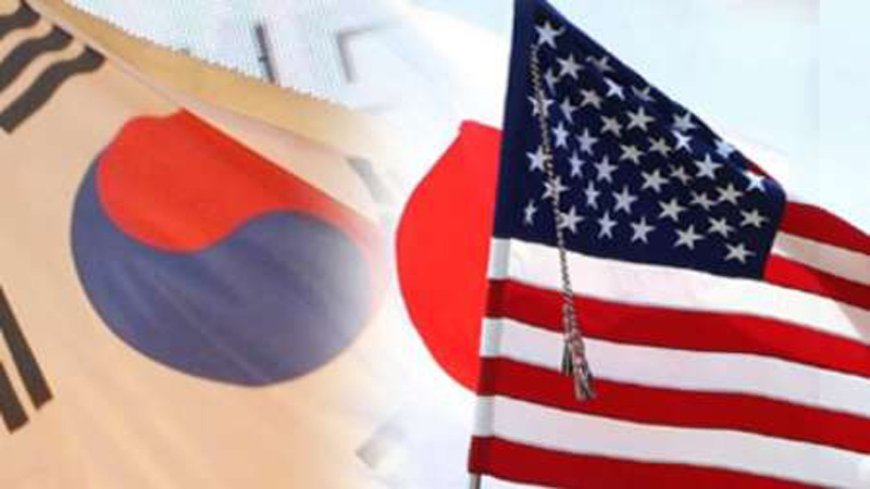Examining the Joint Air Military Exercises of South Korea, Japan and the US
South Korea, Japan and the United States held joint air drills. This exercise was said to be held in response to North Korea's intercontinental ballistic missile test in the skies of the Korean Peninsula.

The three countries recently activated North Korea's missile warning information sharing system and agreed to plans for multi-year trilateral exercises. Whether the actions of Tokyo, Washington and Seoul can act as a deterrent to Pyongyang's missile activities or not, analysts on military and security issues give a negative answer. Flags of South Korea, Japan and the United States Because North Korea sees the short, medium and long-term plans of the United States and its allies as a serious threat to its national security and is developing its missile program to strengthen its deterrent power. International relations expert Lee Wan-ti said about this, It seems that the US is trying to bring the Korean peninsula to the boiling point to encourage North Korea to make mistakes or Pyongyang will end its strategic patience with Japan and South Korea. Then this region will move towards war and crisis. South Korean President Threatens to Destroy North Korea Therefore, Pyongyang has repeatedly considered America's provocative actions to cause more tensions in East Asia and warned of the consequences.
Meanwhile, according to the Joint Chiefs of Staff of the South Korean and American armies known as JCS, they held tripartite exercises with Japanese participation in waters east of the southern island of Jeju, ignoring warnings from North Korea. Where the air defense detection areas of South Korea and Japan overlap. Although North Korea is under sanctions from the United States and its allies, its military developments, especially its missiles, are of great concern to the United States. Because in practice sanctions in the military sector are not as efficient as Washington hopes. Therefore, America uses the growth of North Korea's missile industry as an excuse to exert greater pressure on Pyongyang. South Korea, Japan and the United States held joint air drills. This exercise was said to be held in response to North Korea's intercontinental ballistic missile test in the skies of the Korean Peninsula. North Korea's recent ballistic missile test actually reverses the entire strategy of the US and its allies to stop North Korea's missile program and shows that this country is using all its capabilities to strengthen its deterrent power. Kensuke Takayasu Maba, an international relations expert, said Japan and South Korea have united with America against North Korea, and they are highly vulnerable to possible North Korean missile attacks and may be destroyed in a missile conflict.
From here, the East Asian region really needs crisis and security assistance, but this must not stop convergence and dialogue between countries in the region to solve problems and strengthen peace and security. However, according to South Korea's announcement, the aim of holding joint air drills with America and Japan is to strengthen the three countries' capabilities in responding to what they say are North Korean nuclear and missile threats. In fact, Pyongyang considers the US to be the cause of the crisis on the Korean Peninsula and has repeatedly warned of the impact of American militarism in the region. Who is the Main Winner of US Missile Sales to Japan? In a general evaluation of US policy on the Korean Peninsula, three objectives can be considered. North Korea and South Korea First, US efforts to encourage nuclear competition in the region. Second, Washington is trying to push North Korea to the point where its strategic patience will end and it will take actions that benefit US interests. And third, the United States spreads anti-Korean sentiment against North Korea and tries to justify its military presence in South Korea and Japan by placing more than 100 thousand military troops in both countries.













































